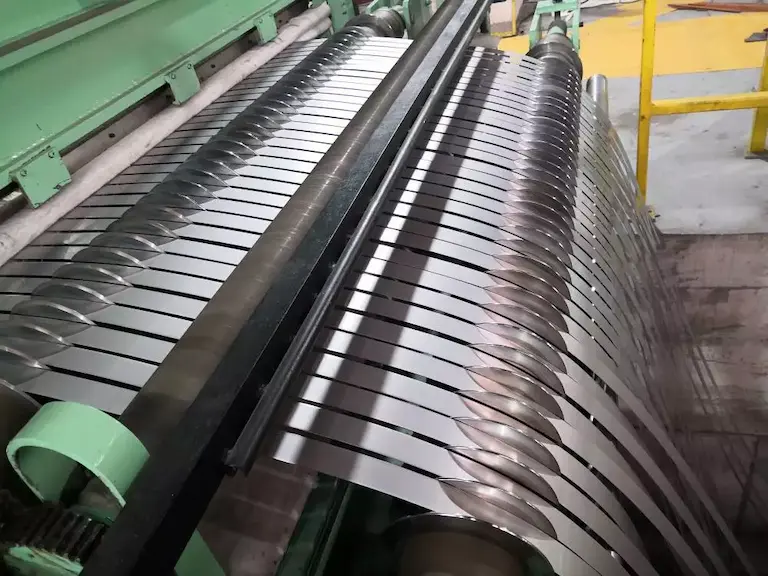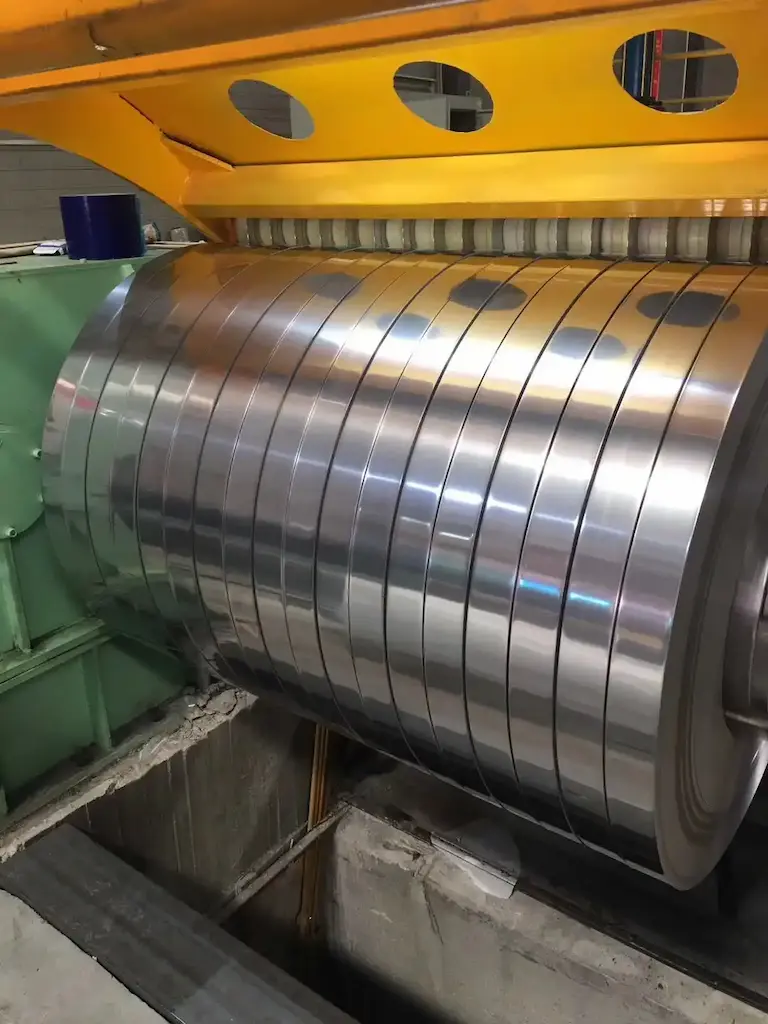A Complete Guide to Stainless Steel coil Slitting

Coil slitting is a critical metal processing technique that involves cutting wide coils of stainless steel into narrower strips. Let me explain the process and its significance in stainless steel manufacturing.
According to the Steel Manufacturers Association (SMA): “Coil slitting is a precision longitudinal cutting operation that transforms master coils into multiple narrow strips of specific widths while maintaining stainless steel material specification standards.”
Key components include:
- Uncoiler/Payoff reel
- Slitting head with circular knives
- Tension control system
- Recoiler/Rewind station
Technical Specifications
Precision Requirements
- Width tolerance: typically ±0.2mm
- Edge quality control
- Surface finish preservation
- Consistent tension maintenance
Common Applications
- Manufacturing inputs for:
- Automotive trim
- Construction materials
- Industrial components
- Consumer products

Stainless steel strip slitting machine is used in the production process of stainless steel strip.
But why use a stainless steel strip slitting machine?
How does the stainless steel strip slitting machine work?
The following is a complete stainless steel strip slitting machine.
Reasons for Using Stainless Steel Strip Slitting Machine
With the rapid development of the social economy, earth-shaking changes have taken place in communications, electronics, and automation equipment. People’s requirements for the quality and appearance of the final product continue to increase. The requirements for belt quality are becoming stricter.
Different from conventional stainless steel sheets, precision stainless steel strips usually refer to stainless steel strips with a smaller thickness. The manufacturing process and product quality have special requirements. They are widely used in electronic stamping parts, optical cables, diamond blades, lithographic materials, clocks and other fields.
With the vigorous development of textile, packaging, metal production and other industries, the demand for precision stainless steel belts is increasing. As a supporting slitting machine, it plays a key role in the slitting and quality control of products.
Slitting is the process of further processing wide films, strips, etc. into products required by the production process. It occupies a very important position in the entire production process. The precision of slitting and the control of the process flow directly affect the quality and appearance grade of the product.
J3 Stainless Steel : A Complete Guide For Importers
1600MM SLITTING MACHINE
- Thickness: 0.2mm – 4.0mm
- Width: 25mm – 1600mm
630MM SLITTING MACHINE
- Thickness: 0.01mm – 3.0mm
- Width: 7mm – 630mm
Process Flow of Stainless Steel Strip Slitting Machine
The unwinding operation of the stainless steel strip is controlled by the unwinding motor, and the strip is unwinding under the action of the resistance brake. The processing section of the slitting machine adopts the upper and lower circular knife slitting method. The stainless steel strip passes through the cutter at high speed, and the stainless steel strip is slit into the required product according to the given slitting requirements.
And the high-pressure fan blows away the side material. During the debugging process, adjust the position of the cutter to make it in a precise fit state to ensure the accuracy of slitting. The strip is reeled by the reeling shaft after active slitting.
At the same time, there is a counter to count the meters during the slitting process. When the slitting product reaches the set length, the host will automatically stop. If there is no set length, it needs to be stopped manually. When the unwinding of a roll of stainless steel strip is about to end, to prevent the stainless steel strip from slipping from the slitting mechanism, it should be manually stopped, so that the end of the strip has not reached the slitting mechanism before the new strip is connected, and the two rolls are activated.
The stainless steel strip interface arrives at the rewinding place, and then it starts to run automatically. The entire slitting mechanism includes an unwinding mechanism, traction mechanism, slitting mechanism, winding mechanism, and electrical control system. The unwinding, winding, and slitting parts are respectively controlled by tension to ensure the constant tension of the entire production mechanism.
